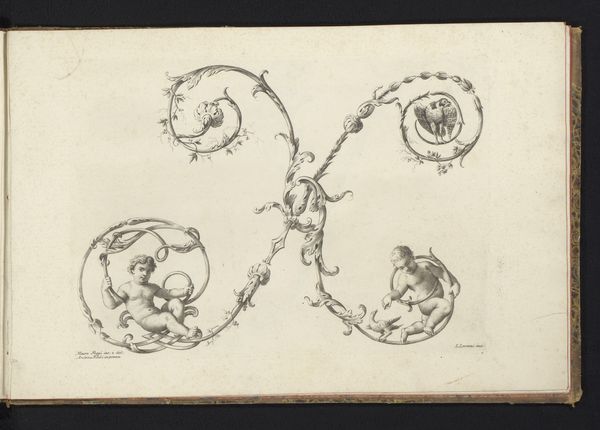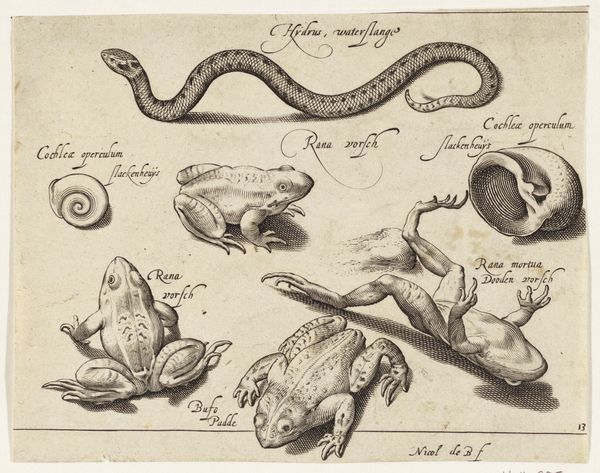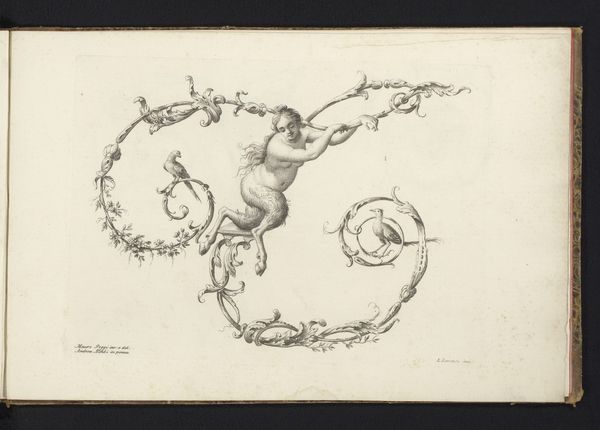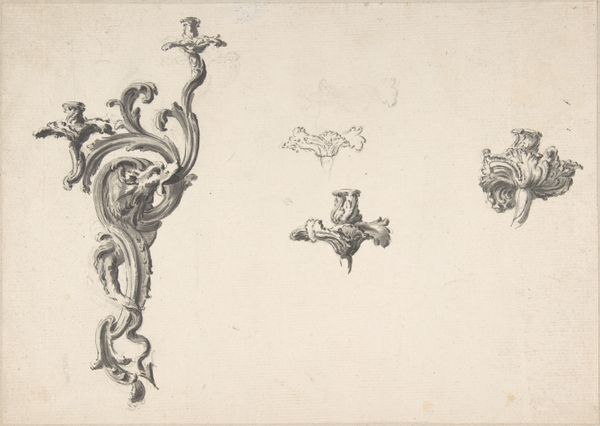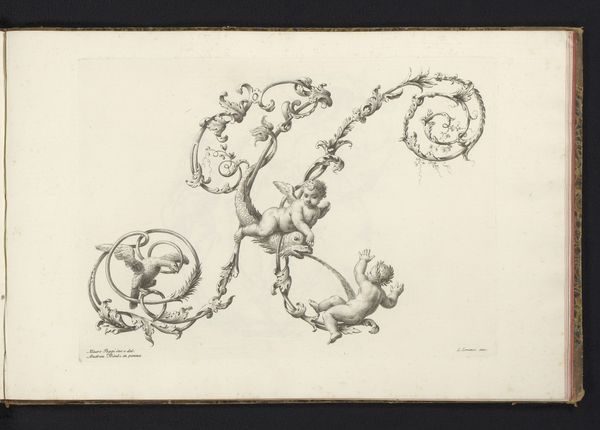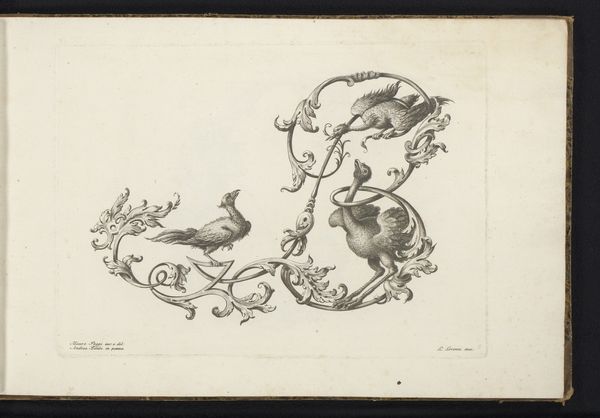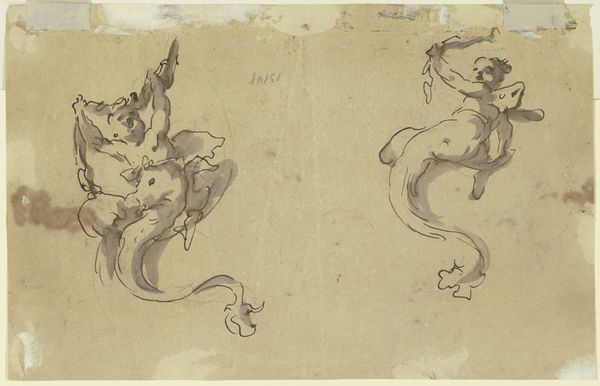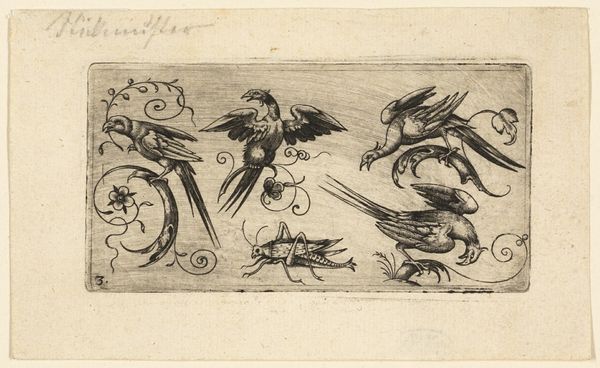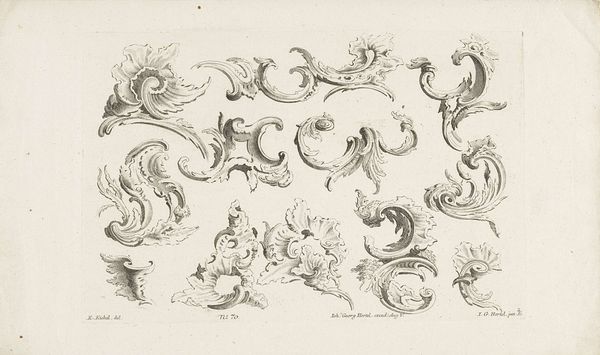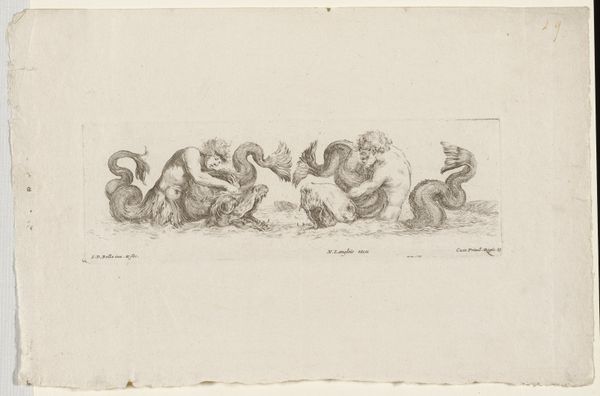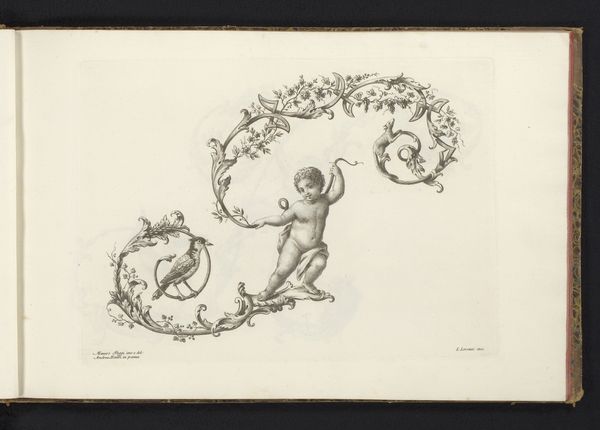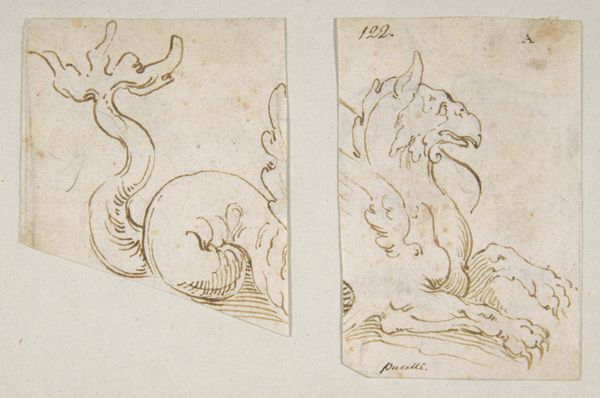
drawing, painting, watercolor, ink, indian-ink
#
portrait
#
drawing
#
painting
#
watercolor
#
ink
#
classicism
#
indian-ink
Copyright: Public Domain
Curator: Here we have "Three Half Floral Wreaths." It's rendered in ink and watercolor, and housed here at the Städel Museum. Editor: Immediately, I'm drawn to the careful inscription underneath each wreath, indicating colour and type of plant material: roses, oak, forget-me-nots... I find myself considering the economy of materials that goes into watercolor studies versus, say, the grand history paintings of the period. It invites questions of value and artistic labour. Curator: Indeed. These seemingly simple wreaths carry layered meanings. The rose, often linked to love and beauty; the oak, symbolizing strength and endurance. Even the forget-me-not, whispering of remembrance. Each carries significant cultural weight. Editor: The visual shorthand used here intrigues me. Look at the textures created with washes of diluted pigment, building form with minimal brushstrokes. Was this meant as a model for larger works, a casual record of botanical interests, or something else? I also find it compelling how, even as representations of nature, these renderings of roses, oak, and forget-me-nots are also material objects, using pigments, paper and inscription to be consumed visually and cognitively. Curator: I believe we are witnessing a personal symbolic lexicon in formation. Each wreath seems to propose a unique emotional landscape—one rooted in classical traditions yet intimately tied to personal experience and interpretation. Editor: Do you think that their specific choice of flora ties back into specific practices from gardening or cultivating botanical collections from the artist? Curator: Possibly. What seems crucial to me is how art, even in an intimate form, mediates our relationship with nature and history, subtly shaping what we choose to remember and value. Editor: And for me, it highlights the inherent tension between art's perceived autonomy and its embeddedness within broader economic and social structures. Curator: I appreciate that; I will never look at watercolors the same again! Editor: It goes both ways. Considering artistic practices like this as forms of cultural preservation makes us ask broader questions about symbolism.
Comments
No comments
Be the first to comment and join the conversation on the ultimate creative platform.
